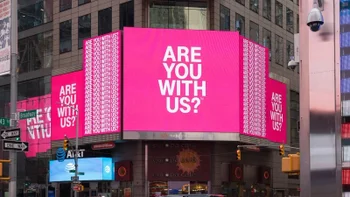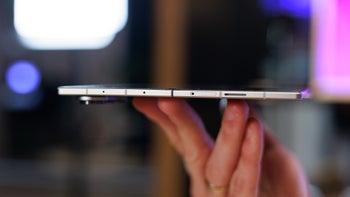Say goodbye to Sprint as the yellow and black gets replaced by magenta

With the news today that T-Mobile plans on merging with Sprint in a transaction valued at $26.5 billion, this could be the end of the road for the Sprint name. The merged company will be known as T-Mobile and will be run at the top by the latter's John Legere. T-Mobile parent Deutsche Bank will own 42% of the carrier, and Sprint parent SoftBank will control 27%. The public will own the remaining 31%. The deal, which still requires regulatory approval, will reduce the number of major U.S. wireless operators by 25%.
The history of Sprint is a long one, dating back to the Brown Telephone Company formed in 1899. But let's move ahead to a time period when you might have first run into the company's cellular business. In 1997, Sprint opened stores inside Radio Shack locations to sell cellphones and wireless service. 20 million handsets were sold over the course of the original partnership.
In 2004, Sprint purchased Nextel creating a combination of the nation's third and fifth largest wireless operators, respectively. The deal was approved by regulators under the condition that Sprint employ its 2.5GHz high-frequency spectrum within four years. On September 17th, 2007, just as the smartphone era was about to kick off, Dan Hesse was named CEO of Sprint Nextel. Under his leadership, Sprint signed a controversial deal with Apple in order to get the iPhone for his customers. Sprint paid Apple $15 billion over 4 years for the rights to sell the phone. Hesse starred in several television commercials for Sprint and also signed off the purchases of pre-paid carrier Virgin Mobile, and 4G network provider WiMax.
In July 2013, after a rousing takeover battle for Sprint that featured rival bids from SoftBank and Dish Network, the Japanese telecommunications company wound up with 78% of Sprint (which it later built up to over 80%). Later that year, SoftBank CEO Masayoshi Son and Sprint CEO Dan Hesse said that they wouldn't rule out a merger with T-Mobile. At the time, Sprint was the stronger of the two U.S. carriers. Sure enough, rumors of such a deal led the FCC and DOJ to quash a transaction before one was even announced. Sprint backed away from the talks, and Hesse was suddenly out as CEO of Sprint. The founder of phone distributor Brightstar, Marcelo Claure, was named Sprint's new CEO in August 2014. The next year, T-Mobile leaped over Sprint to become the nation's third largest carrier.
Sprint tried a number of things to stop its downward spiral. In December 2014 it started a promotion that offered consumers monthly service at roughly half the price of the competition. The carrier offered unlimited data, ended it, and then brought it back. It also started to give its subscribers the option to lease a handset instead of purchasing one outright, or financing a purchase. The currently available Sprint Flex lease runs for 18 months. Once that period of time is up, subscribers can continue to lease the device, or purchase it for thePurchase Price Option. That figure can be paid all at once, or in 6 monthly installments.
But no matter what Claure attempted, it wasn't helping Sprint. With that speedy bullet train known as T-Mobile continually moving forward and innovating, the CEO made the only decision he could be agreeing to merge with T-Mobile. And while there are still regulatory agencies that need to be convinced, if the FCC and DOJ sign off, and stockholders of both firms agree, the Sprint yellow and black will be replaced with the T-Mobile magenta. Sprint will go the same way as EJ Korvette's, Eastern Airlines, Compaq and EF Hutton.
Sprint tried a number of things to stop its downward spiral. In December 2014 it started a promotion that offered consumers monthly service at roughly half the price of the competition. The carrier offered unlimited data, ended it, and then brought it back. It also started to give its subscribers the option to lease a handset instead of purchasing one outright, or financing a purchase. The currently available Sprint Flex lease runs for 18 months. Once that period of time is up, subscribers can continue to lease the device, or purchase it for thePurchase Price Option. That figure can be paid all at once, or in 6 monthly installments.
But no matter what Claure attempted, it wasn't helping Sprint. With that speedy bullet train known as T-Mobile continually moving forward and innovating, the CEO made the only decision he could be agreeing to merge with T-Mobile. And while there are still regulatory agencies that need to be convinced, if the FCC and DOJ sign off, and stockholders of both firms agree, the Sprint yellow and black will be replaced with the T-Mobile magenta. Sprint will go the same way as EJ Korvette's, Eastern Airlines, Compaq and EF Hutton.
Follow us on Google News














Things that are NOT allowed:
To help keep our community safe and free from spam, we apply temporary limits to newly created accounts: